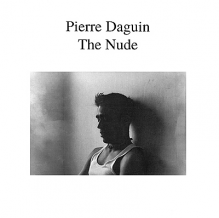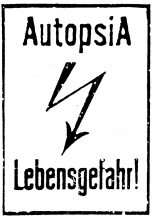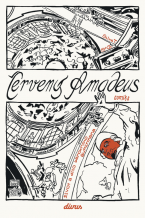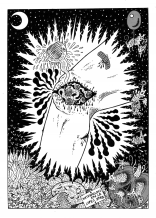| Umělec magazine 2001/3 >> Cloned Identity | List of all editions. | ||||||||||||
|
|||||||||||||
Cloned IdentityUmělec magazine 2001/301.03.2001 Vít Havránek | profile | en cs |
|||||||||||||
|
"Those familiar with the Czech and Slovak art scenes may recognize the name Stano Filko. And very likely those same people would, without hesitation, and mostly based on his initial oeuvre, place him in the 1960s context – rightfully so. Few recall, however, what exactly it was that this artist did back then, and perhaps only a handful of Slovak art historians know what he`s been working on during the past ten years, since his return from exile in the United States (1983 – 1989). Nevertheless, Filko is now finding himself back in the spotlight of Slovak art.
At the end of the 1960s Filko was an emerging star — not only in Slovakia but also in the Czech lands. He gained recognition at prestigious European exhibitions such as Frank Popper’s Cinetisme, Spectacle, environment (Grénoble, 1968); he was invited to Documenta VII; he was mentioned in every important foreign review of contemporary Czechoslovak art at that time (Padrta, Popper, Restany) and in books by Frank Popper and Udo Kultermann, among others. Despite this, the extent of Filko’s work is so little known that a condensed interpretation would be pointless. Instead, let’s now spend some time remembering a few of the areas he was involved in. In the 1950s and 1960s, Filko painted, made assemblages (so-called “accumulages” or “altars of reality”) and, together with Alex Mlynárčik and Zita Kostrová, invented the first Happsoc (1965) — a practically inexplicable action something like a happening, conceptual art, and a proclamation all rolled into one. His “altars of reality” combined various materials/objects, shards of mirror, photographs and daily objects. As time passed, the works were slowly added to and eventually expanded into whole environments. From 1966, Filko began including electronic media such as slide projection, radio and sound in the environments, bridging the gap between pure phenomena and information sources. Pierre Restany referred to him as an “architect of information.” In 1967, at Gallery Karlovo Náměstí, Filko advanced to the role of spiritual action artist when he employed every artistic gesture in the canon, working with the entire gallery environment. At that time he was also collecting photographic material (found photographs taken from magazines, books and newspapers) that reflected his peculiar areas of interest, ultimately publishing it all in the crude series Associations. He also put out his own music, and the catalogue he published in 1970, Stano Filko, Oeuvre II, is in its own right a conceptually sophisticated project. In the 1970s, his installations and actions shifted slightly, away from the social, political and sociological reality of the freer 1960s to values more emotional and spiritual in nature. Around that time written text began to play a more crucial role in his work (White Space in White Space, 1973-1977). The texts were not merely background or addition. In fact, they became an independent element that gradually developed into a new discipline called Text Art. They are notable for their deconstruction of standard orthography and for their characteristic syntax. Understanding the origins and specific features of Filko’s Text Art, as well as categorizing it within the context of conceptual language, would require a lengthy study. Filko focused on combining and harmonizing rationality, sensitivity and emotion, and then transformed the texts, allowing them to assume a greater homogeneity (see texts “Emotion, Clear Emotion, White Space in White Space,” 1977, and “Transcendence,” 1978). His American works from the 1980s and 1990s pared down to a kind of modern primitivism, strengthening the symbolic and spiritual dimension of his work through the simplification of means, which further developed into a complicated personal iconography. In order to understand Filko’s installations from that time, it is important to notice the increasing number of texts that no longer relate to the individual projects. They represent a perpetually developing study dealing with numerous phenomena, and play a defining role in his iconography. But the theme that most closely approaches Filko’s person/body is the construction of his own identity, the symbolic reconstruction of his own ego following each of his three self-declared clinical deaths (1945, 1952, 1984). He takes the experiment further by cloning his ego through various name mutations: Stano Filko (1937-1977), Stan Fylko (1978-1987), Stan Phylko (1988-1988/1989), Phylko (1988-1997), and Phys (1998-present). In addition to the theme of his personal identity, which dates all the way back to the 1960s (My Birthplace, 1968/1978), Filko also sought to unravel the motif of Woman/Venus/Shehrezad and the continuously recurring point of infinity/space/time cosmos. Now he has once again begun to initiate new groups and projects, as he did in the 1960s and 1970s when he formed Filko-Mlynárčik, and Filko-Laky-Zavarský. One of his recent joint projects is a strong conceptual and visual partnership with the much younger artist Boris Ondreička. Due to the nearly forty-year-long absence of any exchange between Slovakia and the rest of the European art scene, there is a distinct imbalance between the significance and originality of Filko’s works and the recognition they have achieved outside Slovakia, or even in his homeland. The generation that emerged in the 1960s was without a doubt the one that suffered most from this neglect. The influence that political, cultural and social circumstances had on Filko’s work during different periods could form a chapter of its own. His mutually influential relationship with society was most striking in the second half of the 1960s, an exceptionally fruitful time for Filko, in which he created a number of actions/concepts Happsocs I.-IV.), big projects and environments, “project art” and “associations.” Although Filko has succeeded in realizing relatively imposing projects (the environments Universal, Cathedral of Humanism, Cosmos etc.), great potential lies latent in his list of unrealized projects, projects Filko considers to be finished works of art, or “project art,” in themselves. Since the end of the 1960s, he has been referring to them as a genre entitled “conceptual thought.” They are not utopian in the standard sense of the word. Project art was conceived of intentionally as art whose definite material existence remains open. Almost all of Filko’s projects can be realized, but the artist seems to have no desire to waste time and energy in their immediate realization. At the beginning of the 1970s, Filko came under extreme political pressure and soon found that he could no longer work. Logically Filko should have continued to develop his “project art” as opposed to the realizations, and this was partly his approach. However, it seems that realizations represent a more integral part of the artistic life for Filko. Furthermore, the result of free choice is qualitatively different from action taken under overt ideological pressure: The potential for materialization is always open, and electing to leave a project in virtual form is a metaphysical and spiritual demonstration of personal independence from reality. It is a joyful, unrestrained selection as opposed to a position forged by external circumstance. But it’s Filko’s approach to creation that is exceptional, the need to constantly add to a work, to interpret and include more in his current pieces or, on the other hand, not. For example, following the so-called “program” White Space in White Space, he inserted new perspectives into already finished projects, transforming a number of his works from the 1960s by either painting himself white or cutting out images of himself and the documentation of his actions. He works with his CV and life as if they were legends into which he is inserting symbolic notions — a process representing the a priori construction of his own ego. A brief summary of his work reveals a conceptual nature particularly unaffected by dogma. Because of its scope, his crossover approach defies any simplistic understanding. Clearly this is what makes him so accessible to current thought, sensitivity and critical view. The Prague City Gallery is organizing a concise retrospective of Filko’s work for 2002 and will publish his first extensive catalogue in thirty years, which, with luck, will capture the range and originality of his realizations, concepts and projects. These days, Filko calls himself Phys, but the work on his past is far from finished. For Filko the past only exists as a field of interpretation and unfinished action. Translated by Vladan Šír "
01.03.2001
Recommended articles
|
|||||||||||||
|
04.02.2020 10:17
Letošní 50. ročník Art Basel přilákal celkem 93 000 návštěvníků a sběratelů z 80 zemí světa. 290 prémiových galerií představilo umělecká díla od počátku 20. století až po současnost. Hlavní sektor přehlídky, tradičně v prvním patře výstavního prostoru, představil 232 předních galerií z celého světa nabízející umění nejvyšší kvality. Veletrh ukázal vzestupný trend prodeje prostřednictvím galerií jak soukromým sbírkám, tak i institucím. Kromě hlavního veletrhu stály za návštěvu i ty přidružené: Volta, Liste a Photo Basel, k tomu doprovodné programy a výstavy v místních institucích, které kvalitou daleko přesahují hranice města tj. Kunsthalle Basel, Kunstmuseum, Tinguely muzeum nebo Fondation Beyeler.
|

































 New book by I.M.Jirous in English at our online bookshop.
New book by I.M.Jirous in English at our online bookshop.
Comments
There are currently no comments.Add new comment